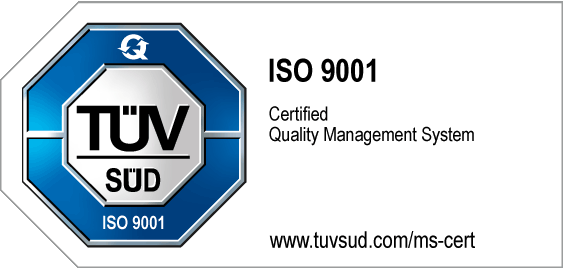Trend Analysis – At a Glace
| Trend Analysis in Foresight: | Trend analysis in foresight systematically identifies and assesses long-term developments and changes. It enables early insights into possible future scenarios and helps derive actionable strategies. |
| Structure of Trend Analysis: | Typically, trend analysis involves gathering and evaluating relevant data to detect ongoing developments and patterns. These insights are then systematically assessed to understand impacts, dynamics, and potential future changes. |
| Applications of Trend Analysis: | Trend analysis is used by businesses, policymakers, and researchers to identify early opportunities and risks related to markets, technologies, or social changes. It supports strategic decisions, innovation processes, and the creation of long-term future strategies. |
| Visualisation of Trend Analysis: | The visualization of trend analysis often uses a Trendradar, which displays trends in a circular diagram based on their relevance and time horizon. A Trendradar provides a clear overview of different trend categories and highlights which trends are gaining importance in the short or long term. |
| Challenges of Trend Analysis: | A key challenge is the uncertainty inherent in forecasting, as unexpected events or disruptive changes can abruptly alter trends. Additionally, there is a risk that heavily past-oriented data overlooks emerging new signals. |
What is a Trend Analysis?
Trend analysis is a methodical approach in trend management used to examine historical data and identify consistent patterns or changes over time. By evaluating multiple data points, analysts can gain insights into how certain variables have evolved, which helps in understanding past behaviors. This foundational step is essential for making sense of complex datasets and spotting meaningful trends.
Trend analysis focuses on recognizing these patterns to predict future outcomes with greater accuracy. It involves looking at raw numbers and understanding the context behind the changes. External factors such as economic shifts, technological advancements, or social changes are often considered to provide a comprehensive view.
To perform trend analysis, businesses and researchers gather relevant data from various sources and apply statistical or visual techniques to highlight significant movements. This process can include plotting time series, calculating moving averages, or using regression models to detect direction and momentum in the data. The trends identified are then displayed in a network or trend radar.
Analyzing trends helps organizations make informed decisions by anticipating market developments, customer behavior, or operational challenges. By leveraging these insights, companies can adapt their strategies proactively, minimize risks, and capitalize on emerging opportunities to stay competitive in a dynamic environment.
What is a Trend?
A trend refers to a general direction in which something is developing or changing over time. In business, trends often reflect shifts in consumer preferences or market behavior. Seasonal trends are common, showing predictable changes during specific times of the year, such as holiday shopping patterns or weather-related demands.
Recognizing these trends helps companies adjust their products, services, and marketing efforts to better meet customer needs. By analyzing trends, businesses can improve customer satisfaction and maintain a competitive edge.
Trends are often identified by examining past data and analyzing data points over a specific period. When these data points show a consistent increase or decrease, they indicate an upward or downward trend. For example, if past data reveals declining sales over several months, this pattern may signal a downward trend that requires attention. In many cases, the data suggests possible causes behind the trend, enabling businesses to take proactive measures to address challenges or seize new opportunities.
Advantages of Trend Analysis – Overview
Trend analysis provides companies with the opportunity to identify early market changes and emerging opportunities. By systematically evaluating data, developments over time can be better understood and integrated into precise market analyses. This enables companies to gain valuable insights into the preferences of their target groups and to proactively adapt their strategic management.
Early Detection of Change
One of the greatest strengths of trend analysis lies in the early identification of changes in the market and in consumer behavior. This allows companies to respond to emerging preferences before they become mainstream – gaining valuable competitive advantages in the process.
Trend analysis enables organizations to systematically track changes over time in detail:
- By evaluating time series and historical data, developments over extended periods can be analyzed.
- Experts identify shifts in demand, emerging technologies, or social transformations.
- Especially in the context of market research, this helps to anticipate future challenges and develop appropriate strategies.
- As a result, companies are not merely reactive – they can actively shape trends.
More Accurate Market Analyses Through Data Patterns
Trend analysis provides a solid foundation for more precise market research. Clear data patterns help companies assess opportunities and risks more effectively, reducing uncertainty in investment and strategic decision-making.
During the analysis process, statistical methods are used to structure and evaluate large volumes of data. Data from various sources – such as sales figures, customer feedback, or social media – provide insights into trends and their momentum.
Analysts can determine whether changes are short-lived or have long-term implications. This structured observation of developments over time enables an objective view of market trends – going far beyond assumptions. Especially in complex market environments, this data-driven approach offers greater security and improved planning capabilities.
Better Understanding of the Target Audience and Their Preferences
Trend analysis fosters a deep understanding of consumer behavior and preferences. This enables companies to tailor their offerings and strengthen long-term customer relationships.
In marketing and product development, knowing the exact needs of the target audience is crucial:
- Trend analysis reveal current preferences and highlight possible shifts in customer behavior.
- This enables the design of customized products and services, as well as targeted communication strategies.
- Companies benefit in two ways: They meet existing expectations and also anticipate how these expectations might evolve.
Long-Term Planning and Strategic Development
Trend analysis helps companies plan strategic decisions with a long-term perspective. It provides reliable forecasts that are essential for sustainable growth and innovation.
By observing time series and systematically analyzing trends, experts gain valuable insights for shaping the future. Companies can identify growth opportunities early on, explore new business areas, or adapt existing business models.
This long-term perspective boosts innovation and helps prevent costly missteps. The structured process ensures that strategic goals align with societal, technological, or economic changes. In dynamic markets, this foresight becomes a decisive success factor.
Competitive Advantage
Trend analysis equips organizations with the knowledge and foresight to gain and maintain a competitive edge. It highlights why trend analysis is important in today’s fast-moving markets: by identifying upward trends early, understanding evolving customer needs, and basing decisions on reliable data, companies can act with confidence and agility.
In addition, using momentum indicator strategies allows analysts to assess the strength and sustainability of trends – helping businesses to distinguish short-lived hype from long-term opportunity. This strategic approach positions companies ahead of the curve – ready to lead, not follow.
Limitations of Trend Analysis
While trend analysis is a powerful tool for strategic planning and forecasting, it also has its limitations. One key challenge lies in the reliability of historical data. Trends are often derived from past developments, which may not always predict future dynamics – especially in volatile or disruptive markets.
Another limitation is the risk of overinterpretation: not every fluctuation in data represents a meaningful trend. Analysts must distinguish between short-term noise and actual structural changes. This requires not only experience, but also a careful selection of methods and momentum indicator strategies, which themselves have boundaries in terms of accuracy and context applicability.
Furthermore, upward trends may create a false sense of security. Just because a market or consumer behavior shows positive momentum does not guarantee sustained growth. External shocks, regulatory changes or technological breakthroughs can abruptly shift developments.
Lastly, the importance of trend analysis must always be considered in relation to qualitative insights. Data alone is not enough – social, cultural, and emotional factors also influence trends and should not be overlooked in decision-making processes.
Identifying Trends: Different Trend Analysis Methods
Recognizing trends is crucial for organizations to stay competitive and leverage future developments early. Trend analysis employs various methods to systematically collect, evaluate data, and generate reliable insights. Different approaches have unique strengths and applications depending on the objective.
1. Desk Research
Desk research involves collecting and analyzing existing information from secondary sources like studies, market reports, or online databases. This efficient method offers a quick overview of current trends and helps form initial hypotheses.
2. Expert Interviews
Expert interviews tap into specialized knowledge to gain qualitative insights on current and emerging trends. Experts provide insider views and practical experiences, aiding trend evaluation and relevance assessment.
3. Trend Scouting
Trend scouting is the systematic search for new signals and early indicators of emerging trends by observing innovative markets, startups, or social networks. It focuses on identifying “weak signals” not yet mainstream, supporting early innovation detection.
4. Data Analysis and Monitoring
Modern trend analyses increasingly rely on big data evaluation and continuous monitoring of online platforms, sales figures, or social media. Statistical techniques and algorithms automatically detect patterns and changes over time for objective trend assessment.
5. Delphi Method
The Delphi method is a structured process where multiple experts anonymously provide assessments in iterative rounds, influencing each other. It aims to reach a consolidated judgment on future developments, reducing uncertainty and enabling solid forecasts.
Conducting Trend Analysis in 5 Steps
A successful trend analysis follows five systematic steps to generate reliable insights about future developments. Data is collected, analyzed, evaluated, and then used to derive actionable recommendations. This process helps companies identify opportunities early and minimize risks.
- Step 1 – Define Topic and Goals: Determine the focus area or research question for the trend analysis. Clear goals guide the process and help identify relevant data.
- Step 2 – Collect Data: Gather relevant information from various sources such as market reports, studies, or social media. Diverse data enhances analysis reliability.
- Step 3 – Analyze Data: Systematically evaluate data to identify patterns, developments, and potential trends using statistical and qualitative methods.
- Step 4 – Evaluate and Prioritize: Assess identified trends by relevance, scope, and impact to prioritize the most important developments.
- Step 5 – Derive Recommendations: Develop concrete measures and strategies based on the analysis to leverage opportunities and prepare for changes.
Trend Analysis in the Age of Artificial Intelligence
Trend analysis increasingly benefits from artificial intelligence (AI), which can quickly and accurately process large data volumes. AI algorithms detect patterns and connections in real time that are often inaccessible to humans. This allows for more precise and faster identification of market trends and customer behavior changes. AI also enables monitoring of social media and online platforms to capture “weak signals” early. Overall, AI significantly enhances the efficiency and reliability of trend analyses.
Data Evaluation and Trend Detection with AI
Artificial intelligence enables efficient processing of vast data sets and uncovers hidden patterns and trends vital for businesses. Automated analyses reveal market and customer behavior changes in real time. This allows companies to respond faster to new developments and adjust strategies effectively.
Frequently asked questions and answers
A trend analysis is a systematic process that examines historical data to identify patterns and changes over time. By analyzing these patterns, businesses can forecast future trends and make informed strategic decisions. This method helps organizations recognize opportunities and risks early to stay competitive.
Trend analysis in marketing is a part of market research that focuses on studying past and current data to anticipate future events and shifts in consumer behavior. It involves tracking key performance indicators to identify emerging patterns and changes in the market. By understanding these trends, companies can adjust their marketing strategies to better meet customer needs and stay ahead of competitors.
Trend analysis in accounting involves examining financial statements over multiple periods to identify patterns and changes in business performance. This analysis helps companies understand how market dynamics impact their financial health and operations. By recognizing these trends, businesses can make more informed decisions to improve profitability and manage risks effectively.
A trend is calculated by analyzing past data to identify consistent patterns or directions over time. This process is a valuable tool for forecasting future developments and making informed decisions. The accuracy of a trend calculation often depends on the quality and availability of relevant data.
The 4strat Trendradar is a powerful tool for trend analysis, offering a highly customizable and interactive radar that allows users to visualize trends based on impact, time horizon, and relevance. It enables collaborative evaluations and clustering of trends, making it easier to identify connections and prioritize actions. With its intuitive design and flexible filtering options, the Trendradar helps organizations systematically analyze trends and make informed strategic decisions.
Sources:
- Karama Kanoun, Jean-Claude Laprie. Trend Analysis. M. Lyu. Handbook for Software Reliability Engineering, McGraw-Hill, pp.401-437, 1996, 0-07-039400-8. ⟨hal-00761640⟩
- Conway, M.: A thinking futures reference guide. Foresight: an introduction. Melbourne 2015 (http://thinkingfutures.net)
- Gausemeier, J.; Fink, A.: Führung im Wandel. Carl Hanser Verlag, München, 1999 Dreborg, Karl H. (1996): Essence of Backcasting. Futures, Vol. 29, No. 9
- Hines, A., & Bishop, P. J. (Eds.). (2006). Thinking about the future: Guidelines for strategic foresight. Washington, DC: Social Technologiesnn• Voros, J. (2003). A generic foresight process framework. foresight, 5(3), 10-21
- Müller, A. W. (2008). Strategic Foresight-Prozesse strategischer Trend-und Zukunftsforschung in Unternehmen.
- Burmeister, K., & Schulz-Montag, B. (2009). Corporate foresight. Zukunftsforschung und Zukunftsgestaltung, 277-292.


